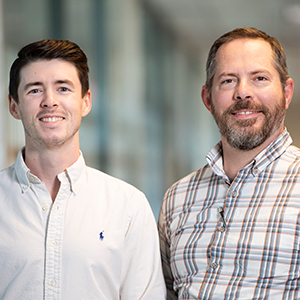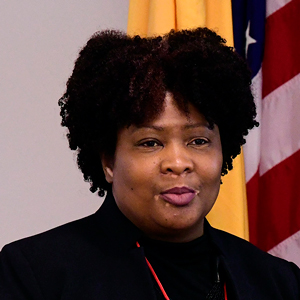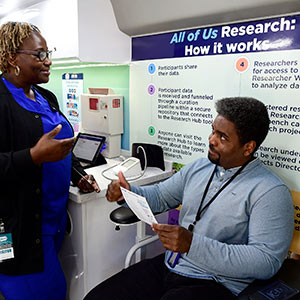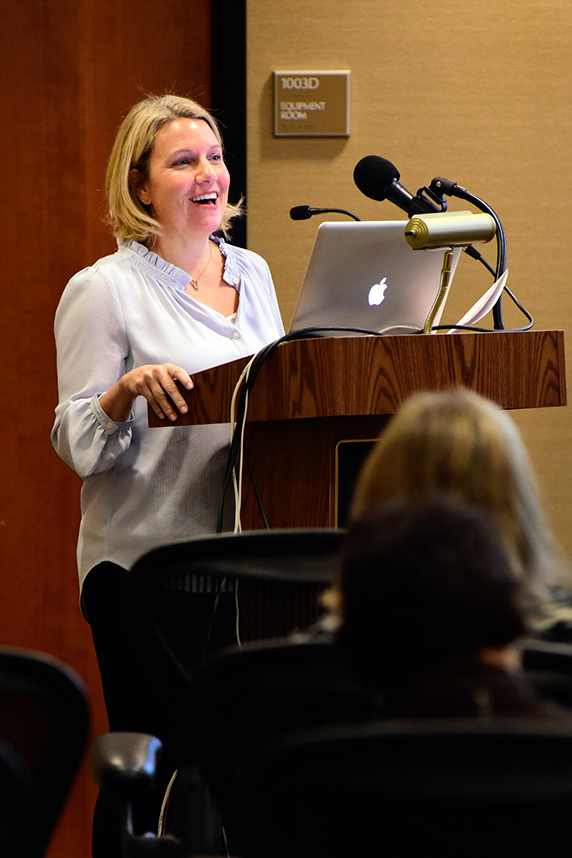 “You can get a wide range of estimates on the size of the LGBT population depending on how you ask the question, particularly among younger generations,” said Parker. (Photo courtesy of Steve McCaw)
“You can get a wide range of estimates on the size of the LGBT population depending on how you ask the question, particularly among younger generations,” said Parker. (Photo courtesy of Steve McCaw)The National Institutes of Health (NIH) has played a growing role in recent years in the study of sexual and gender minority (SGM) health, according to Karen Parker, Ph.D., director of the NIH Sexual and Gender Minority Research Office (SGMRO).
Since its establishment in 2015, Parker’s office has taken the lead at NIH in promoting SGM health research. The 56-member NIH wide SGM Research Coordinating Committee (SGMRCC), which she co-chairs, supports the work of her office and helps further increase support for SGM-related health research across NIH.
“We want SGM people to see themselves in our work, so they won’t feel that they’re not represented at NIH,” said Parker, during a February 6 talk at NIEHS.
Active partners
Parker was welcomed by Sheila Newton, Ph.D., director of the NIEHS Office of Policy, Planning, and Evaluation. Newton’s office coordinates NIEHS activities with SGMRO. “As active partners on the coordinating committee, we work closely to bring their work to the attention of our research communities,” Newton said.
The idea for Parker’s talk, according to Newton, came from Kelly Chandler, Ph.D., a health science policy analyst and NIEHS representative on the coordinating committee. “I thought her visit could help us do more in the area of sexual and gender minority health,” said Chandler.
NIEHS representatives also serve on SGMRCC subcommittees. Bill Jirles, a program analyst in Newton’s office, helped to develop a tool for tracking progress on the SGMRO strategic plan across NIH. “It’s great that this office is reaching out to all the institutes and helping this community,” he said, noting the progress being made.
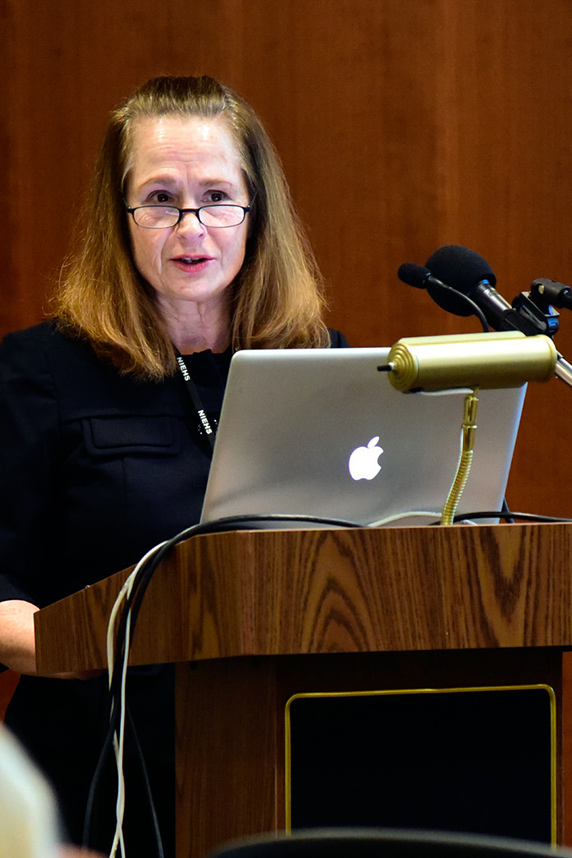 “As its founding director, Karen Parker was instrumental in the creation of the SGMRO,” said Newton. (Photo courtesy of Steve McCaw)
“As its founding director, Karen Parker was instrumental in the creation of the SGMRO,” said Newton. (Photo courtesy of Steve McCaw)SGM environmental health
SGMs encompass lesbian, gay, two-spirit, bisexual, and transgender populations, as well as those whose reproductive development varies from traditional norms. This includes individuals with disorders or differences of sex development (DSD), sometimes known as intersex.
“NIEHS is doing work in terms of DSD,” Parker said. “Disorders or differences of sex development affect as many as one in 5,500 people.” For example, recent NIEHS in-house research suggested that sexual development is flexible and may respond to genetic or environmental factors.
NIEHS also focuses on environmental stressors, an area of significant concern to Parker’s office because of the resulting health disparities. “SGM populations may tend to move toward urban areas, where the environment, especially air pollution, negatively impacts health,” Parker said. “Homelessness, which affects health, is also a problem, particularly among youth. There are many unanswered questions related to environmental and SGM health.”
Understanding the influences of poverty and the environment on SGM health is complicated by what is known as intersectionality, or intersecting identities, and how that affects experiences of discrimination. Determining what part of health disparities is attributable to sexual and gender identity is difficult.
“There is an opportunity for NIEHS to play a significant role in studying how environment-related health disparities affect the SGM population,” Parker said.
Another potential area of cooperation is in the NIH Disaster Research Response Program. “Some 40 percent of homeless youth identify as LGBT,” said Chandler. “Disaster response efforts should be prepared to address the needs of this population.”
Projects across NIH
In fiscal year 2017, NIH funded 379 SGM-related projects. Most these focused on HIV/AIDS, Parker said. “In the future, SGMRO hopes that the NIH grants portfolio will become more balanced, with more work in areas such as smoking, obesity, and suicide. We also want to see additional support through institutional training grants,” she explained.
In addition to its grant portfolio, the work of the SGMRO includes representing NIH at conferences and events, connecting grantees with NIH contacts, sharing information, and developing recognition for early investigators.
“It’s a big, untapped field,” Newton said. “We want to help people see that this area of research is out there, and that it is understudied.”
(John Yewell is a contract writer for the NIEHS Office of Communications and Public Liaison.)





